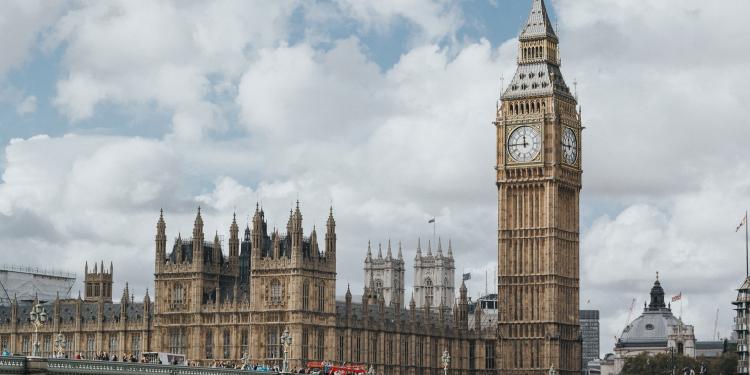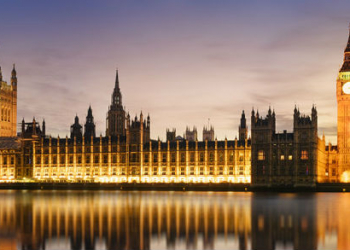The FINANCIAL — In an average pre-pandemic summer, UK residents made almost 6.6 million visits to see friends and family overseas. How could these trips be affected by the current red and amber travel lists, and what might the financial impact be?
More than 5 million visits that UK residents would normally have made to see friends and relatives overseas this summer (July to September 2021) would currently require quarantine and coronavirus (COVID-19) tests on return.
Different countries are classed as red, amber or green based on whether people should travel to them and if quarantine is required because of coronavirus restrictions.
Restrictions will likely reduce the amount of money spent by UK residents overseas compared with a pre-pandemic summer, as well as the amount spent by overseas residents who would have visited the UK.
In Quarter 3 (July to Sept) 2020, when there were restrictions on social contact but travel corridors permitted overseas journeys to a list of countries, visits by UK residents to see friends and family abroad fell by 78% compared with the same three months of 2019.
The red, amber and green lists are reviewed regularly with countries’ status changing depending on the coronavirus situation. The analysis in this article is based on the lists as of 8 June 2021.
During Quarter 3 between 2016 and 2019, an average of more than 5 million visits by UK residents overseas were to friends and relatives in countries now on the amber or red lists, according to analysis of data from the International Passenger Survey. This means at least 80% of visits to friends and relatives would now require quarantine and COVID-19 tests on return to the UK. The UK government is telling people they should not travel to countries on the red or amber lists.
The true figure will be higher because the red, amber and green lists include countries where data on visits are grouped due to small numbers. These are listed in the data as, for example, “Other Africa”, “Other Asia”, etc. Visits to see friends and relatives in these groups of countries came to an average of just over 684,000 each summer, accounting for around 10% of visits for this purpose.
The nations of the UK have their own red, amber and green lists, which are currently identical. People who visit countries on green lists do not have to quarantine on returning to the UK. However, other countries also have their own restrictions on whether or not they would allow UK residents to visit, including with or without quarantine.
The Republic of Ireland is the only country in the top 20 for visiting friends and relatives where quarantine is not required on returning to the UK. This is because it is part of the Common Travel Area, along with the Channel Islands and the Isle of Man.
Between 2016 and 2019, 29% of all overseas residents’ visits to the UK during Quarter 3 were to visit friends and relatives while 23% of UK residents’ visits to other countries were for the same reason.
This made visiting friends and relatives the second most common reason for foreign travel, after holidays. Around 44% of overseas residents’ visits to the UK was for holidays compared with 69% of UK residents’ visits overseas.
<
UK residents made an average of 6.3 million visits to Spain, for any reason (holidays, visiting friends and relatives, business or study) during Quarter 3 between 2016 and 2019. This made Spain by far the most popular summer destination for UK residents.
The second most popular was France, with 3.6 million visits. Both countries are on the amber list as of 8 June 2021.
Australia is the most popular destination on the current green list, with an average of 99,000 visits by UK residents during a non-pandemic summer. The most popular destination previously on the green list was Portugal, with an average of 1.2 million visits by UK residents each third quarter. Portugal was removed from the green list with effect from 8 June 2021.
In 2020, as the coronavirus (COVID-19) pandemic resulted in travel restrictions, UK residents made an estimated 23.8 million visits abroad, a fall of 74% on the year before.
UK residents would normally spend more than £1 billion in each of five summer destinations
20 countries where UK residents spent the most on average during Quarter 3 and how much overseas residents from those countries spend in the UK, 2016 to 2019
It is not possible to say how much of the money that was previously spent overseas by UK residents, or by overseas residents in the UK, would have been spent in 2021 had there been no restrictions.
Furlough, job losses, restrictions and concerns about the risk of travel will all have played a part.
During 2019, UK residents spent a total of £62 billion overseas. This is more than double the £28 billion spent in the UK by overseas residents. In 2020, spending by overseas residents in the UK fell 78% to just over £6 billion, while spending by UK residents overseas fell 78% to just under £14 billion.
During a pre-pandemic summer (Quarter 3 2016 to 2019), more than 20p in every £1 spent abroad by UK visitors was in Spain.
On average, more than £4 billion was spent each summer in Spain by UK visitors, followed by almost £1.9 billion in the USA and in France.
Hotel occupancy in England in 2020 was down on a normal summer
<
Percentage point difference in rooms occupied compared with the same month in the previous year, England, February 2020 to February 2021
The blue shaded areas refer to periods when restrictions across the UK were in effect. In order, these were: first national lockdown in the UK (23 March 2020) to easing of restrictions with non-essential shops reopening in England (15 June 2020); second lockdown in England (5 November 2020) to lockdown being replaced with three-tier system in England (2 December 2020); third lockdown announced in Scotland and England (4 January 2021) to “stay at home” restrictions ending in England 29 March 2021.
Data for percentage point difference in hotel room occupancy in England (XLSX, 18 KB)
Hotels had been allowed to re-open to all guests in July of 2020 following the first lockdown, but by August room occupancy in every region of England was down on the same month of 2019, according to data from VisitEngland.
The South West saw the lowest year on year fall in England in terms of hotel room occupancy during August 2020. VisitEngland data suggest 72% of available rooms were occupied that month in the South West region, down 15 percentage points year on year from 87% in August 2019.
Greater London faced the biggest fall, with hotel room occupancy in August recovering only to 30%, down 56 percentage points on the same month of 2019 (86%).
Seasonally adjusted turnover in the camping sub-industry surpassed the previous year during summer 2020
Indexed seasonally adjusted total turnover, Great Britain, January 2019 to March 2021
Camping, however, proved popular and surpassed its performance in the previous year. There was even an increase in turnover for the camping sub-industry in December, following the end of England’s second lockdown and before the start of the third in January 2021.
Our regular bulletin on the Opinions and Lifestyle Survey, due to be released on 11 June 2021, will include analysis on whether or not adults in Great Britain intend to travel overseas in the next six months.






























Discussion about this post